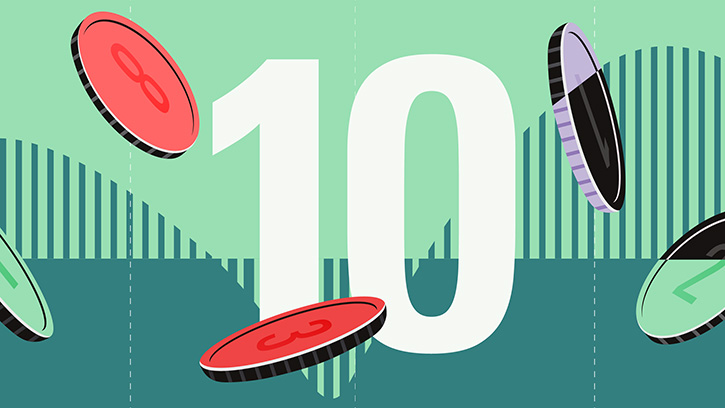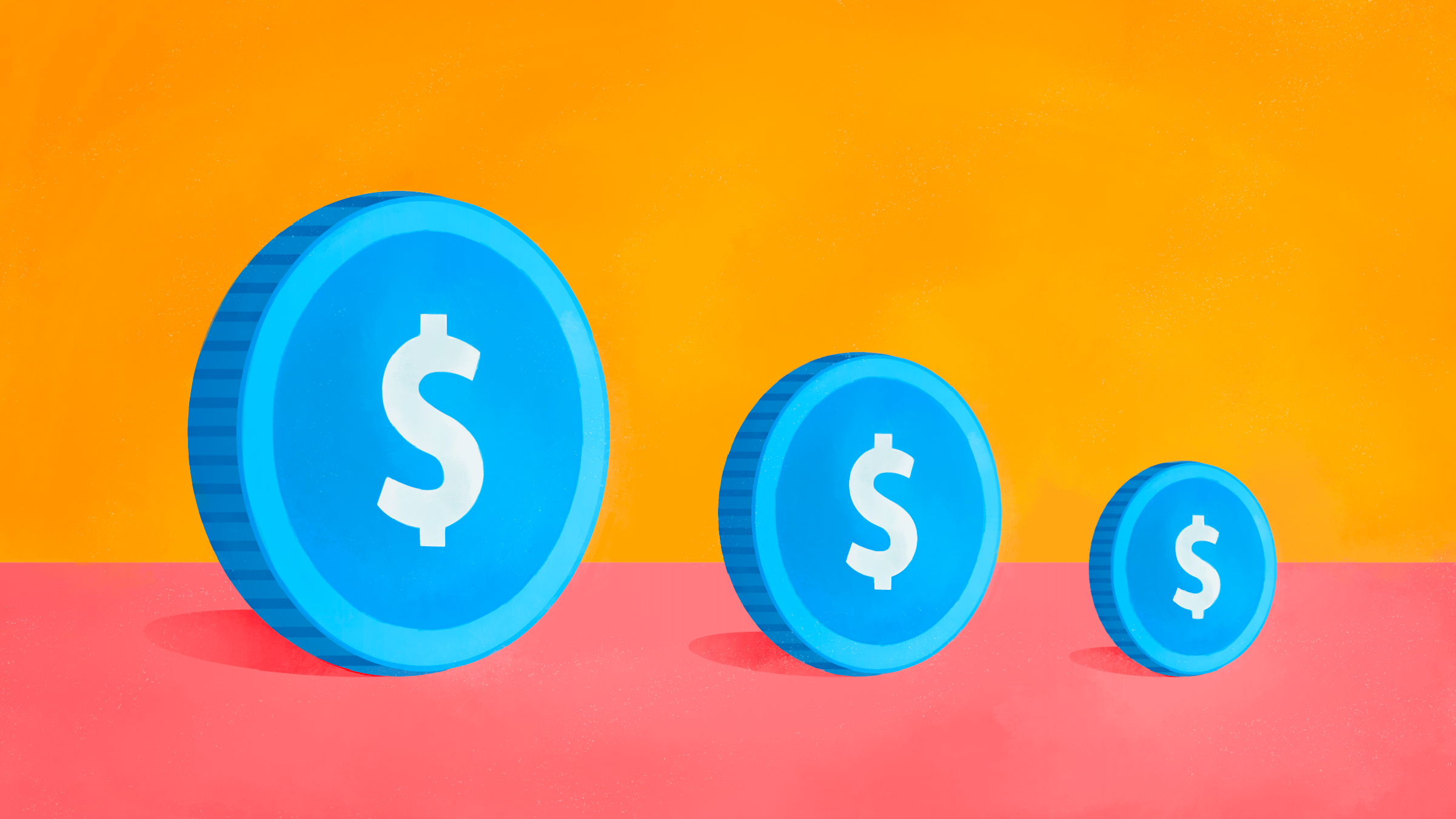:quality(80)/cloudfront-us-east-1.images.arcpublishing.com/morningstar/6ZMXY4RCRNEADPDWYQVTTWALWM.jpg)
I began writing this column in the spring of 2013. Since that time, I have published approximately 1,000 articles. (At 1 million words, my output now exceeds Shakespeare’s. Some might argue that his quality was superior, though.) Not once during that deluge of cyber-ink did I recommend bonds, save for I Bonds in the summer of 2022. Even then, however, I advocated using those securities as temporary certificate of deposit substitutes, rather than as investments for the long term.
The reason for my aversion was simple: Bonds paid too little. In May 2023, the yields on 10-year Treasury notes were far below those of high-dividend stocks, and barely above the level of the overall equity market.
To be sure, Treasury note prices were relatively stable, thanks to their guaranteed payments. However, the yield gap between Treasuries and high-dividend stocks was unduly large, given that most of those companies were likely to increase their payouts over time, while the payments on Treasury notes were forever fixed.
The Problem: Low Yields
:quality(80)/cloudfront-us-east-1.images.arcpublishing.com/morningstar/IXQH56565VDA5NYVKSA6FFS6RY.png)
On the surface, the comparison with the overall stock market looked more competitive, as the two yield levels were similar. But the looks deceived. For one, many dominant businesses do not pay dividends. In May 2013, that list included Alphabet GOOGL, Berkshire Hathaway BRK.A/BRK.B, and Amazon.com AMZN. For another, dividends told only half the story. For every dollar that companies disbursed as dividends in 2013, they spent another dollar repurchasing shares. Thus, the effective yield of U.S. businesses were 4%—well above Treasury yields.
(This argument, of course, also applies to the companies in the high-dividend index, making their 4.3% payout even fatter than the official figure indicated.)
For me, those comparisons disqualified bonds. Admittedly, my perspective was total return. Investors who required guaranteed income would have viewed the issue differently, as would those who could not accept the risk of a fully invested stock portfolio, no matter its relative appeal. But for investors who could tolerate their extra volatility, stocks seemed the obvious choice.
The Result: Poor Performance
Equities fulfilled their promise. Since spring of 2013, the Morningstar US Market Index has tripled its value, the Dow Jones U.S. Select Dividend Index has scored a 150% cumulative gain, and 10-year Treasury notes have appreciated by … 0.08% per year. (Holding the notes until maturity would have achieved a somewhat higher return, but that portfolio would still have lagged far behind both equity benchmarks.)
A Sea Change
But trouble breeds opportunity. Stock yields have barely moved from their 2013 levels. The high-dividend index’s current payout is nearly identical. Yields for the overall stock market have dropped by 50 basis points. However, that decline has been offset by the continued growth in share repurchases. Today, as before, U.S. companies spend about 4% annually on dividends and stock buybacks.
Meanwhile, bond yields have soared. Since spring of 2013, the reward for holding 10-year Treasuries—along with other points on the yield curve—has doubled.
:quality(80)/cloudfront-us-east-1.images.arcpublishing.com/morningstar/26UPJCLICVCMLFQOAACEVVMH54.png)
Now that’s a picture that I could like. The blue bar representing Treasury notes has switched from mirroring the green bar to the orange bar. True, when share repurchases are incorporated, the payouts on high-dividend stocks expand their lead over the 10-year Treasury’s yield, while the overall equity market narrows most of the distance. Nevertheless, a genuine competition now exists. No longer can I merely dismiss bonds.
The Long View
Detailed analysis must await a later date. However, this article can at least provide the long-range view, illustrating how current yields compare with historical levels. Doing so requires new benchmarks, as the previously cited indexes lack sufficiently long track records. (That holds even for 10-year Treasury notes.)
I therefore switched to two Ibbotson Associates indexes, Intermediate-Term U.S. Government and Large U.S. Stock. The chart shows their average annual yields from 1926 through 2023. (Year-end figures were unavailable. With the Intermediate-Term U.S. Government Index, however, I did manually insert year-end figures for 2021 and 2022, and last Friday’s close for the 2023 amount, so that the exhibit could more accurately depict how rapidly bond yields have risen.)
Annual Yields
:quality(80)/cloudfront-us-east-1.images.arcpublishing.com/morningstar/MYNXTWALHBH7RPLLTPEWBZM7CM.png)
This tale is straightforward. Bonds initially performed well after their yields dipped below stock dividends because the Great Depression arrived. When mass panic reigns, relative stock/bond valuations become immaterial. Whatever their prices, bonds will rally and stocks will sink. That process will not cease until light appears at the end of the economic tunnel.
By the mid-1930s, that glimmer had, however faintly, become visible. Since then, bonds have struggled mightily when their yields have not surpassed the aggregate stock market’s dividends. In real terms, bonds lost money through the 1940s, struggled to a slight gain in the 1950s (while greatly lagging equities), and then lost money again, after inflation, during the most recent decade.
Conclusion
As a quick glance at the final chart reveals, bond yields can scarcely be said to have reached uncharted territory. Not only did bond yields carry a larger premium over stock dividends through most of the 1970s, 1980s, and 1990s, but in 2007 the payouts for both intermediate-government security and large-company stocks closely resembled those of today. The scales were similarly calibrated.
Although equities have subsequently outgained Treasuries since that time, their victory margin was much smaller than during the 2013-23 period. In addition, stocks suffered unusually steep losses during the 2008 global financial crisis. Matching the current yield differential did not make 2007′s bonds a better future investment than stocks. But it did make them competitive, after accounting for their reduced risk.
For the first time in many years, bonds now merit consideration from total-return investors.






:quality(80)/cloudfront-us-east-1.images.arcpublishing.com/morningstar/DSZYYKGIYFHBRCV5ODLKEA4PWU.jpg)
:quality(80)/cloudfront-us-east-1.images.arcpublishing.com/morningstar/FH5BNWHBTRGKFEK3BXMD5SM3OM.jpg)












